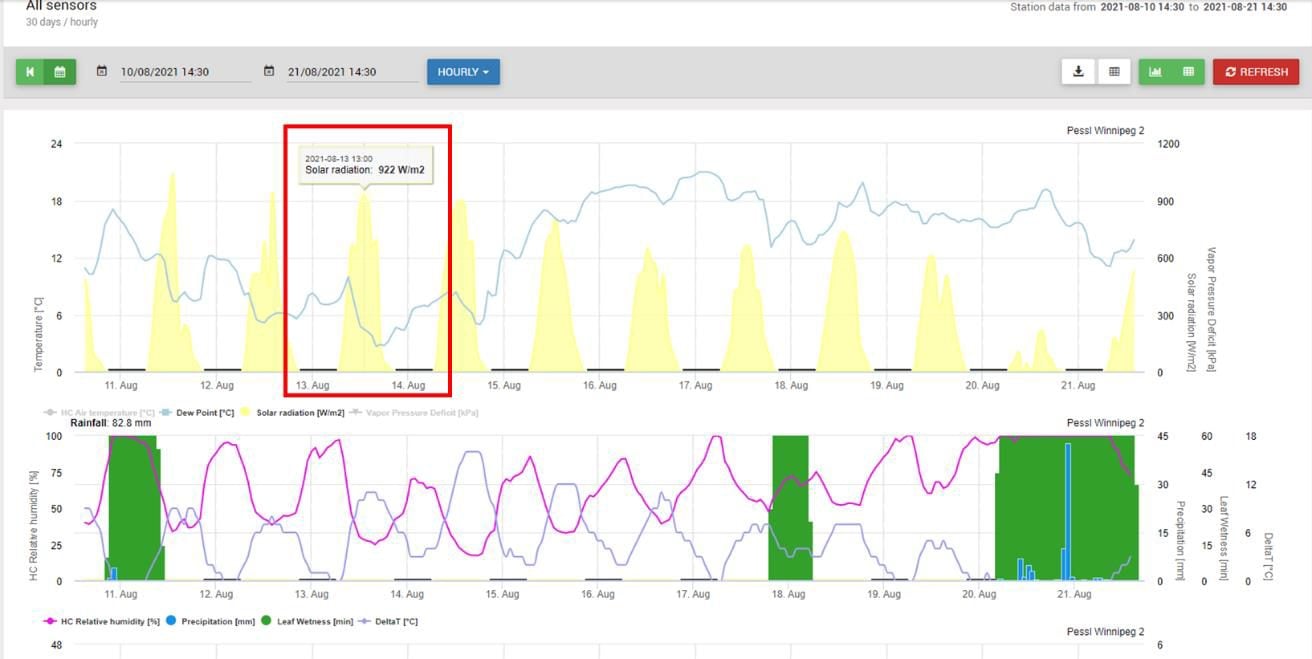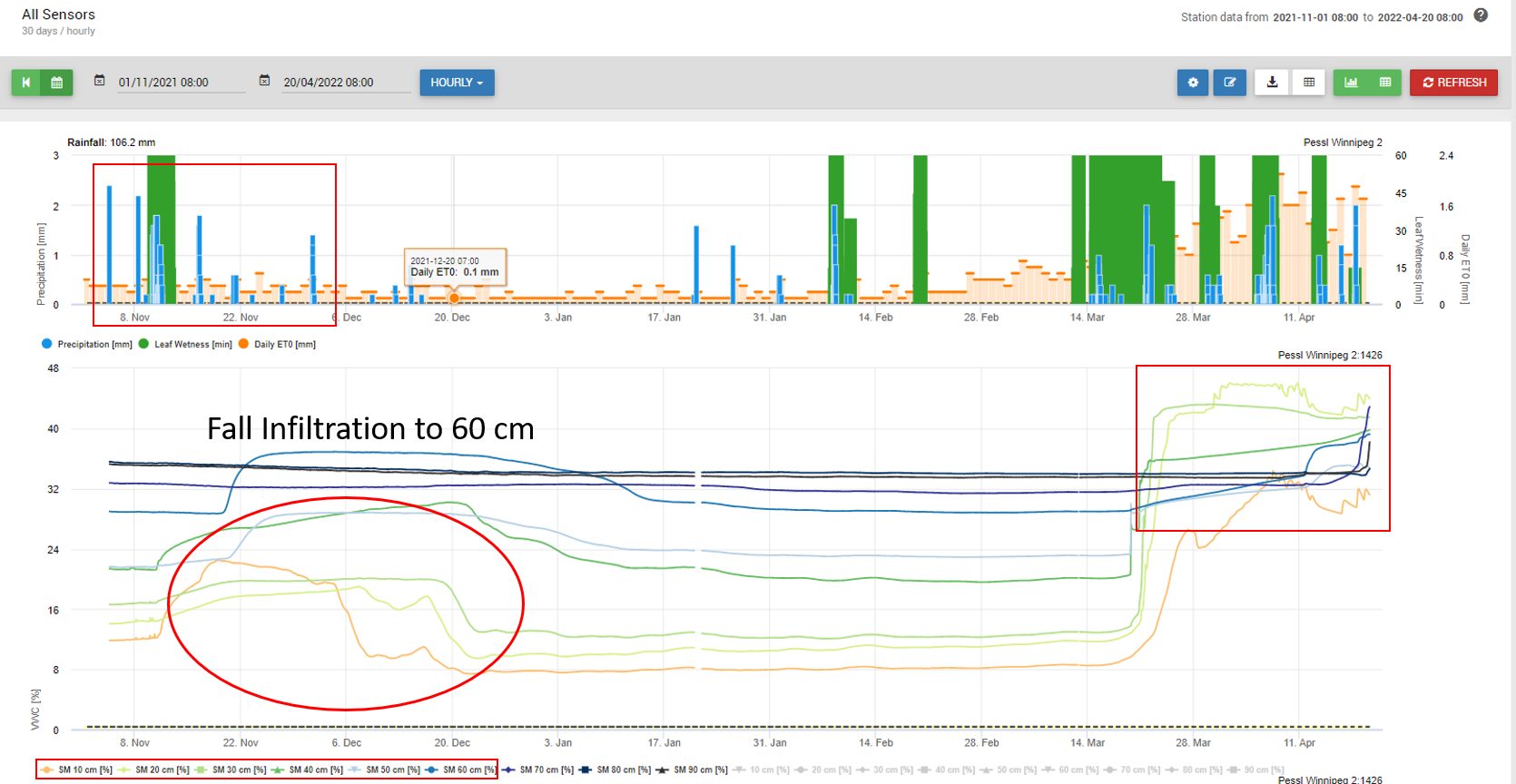USE CASE: Sublimation, Solar Energy and Weather
At this time of year, we all expect showers, but the year 2022 has seen plenty of snow in April. Will this snow help with soil moisture for the “flowers or crops”, or is lost to runoff or evaporation or sublimation?
There are two ways in which water can be lost to the atmosphere. One you are probably familiar with is evaporation, when liquid water absorbs enough energy from the sun it will change into a gas called water vapour and be lost to the atmosphere.
One you are probably not that familiar with is called sublimation, which is the process in which snow is converted directly to a gas vapour without going through the liquid phase. This happens when the snow absorbs direct energy from the sun, even though the temperature can be below freezing.
What makes a good day for high sublimation losses?
Obviously, days with clear, bright skies with high solar radiation favour the losses to sublimation, but do other weather factors contribute? Just the same as days that have dry air and winds lead to higher evaporation rates, they also impact the sublimation rates. If the relative humidity is low and winds are strong, loss from sublimation will be higher. But overall, it’s the solar radiation on a given day that really drives the process.
We must remember that in the northern latitudes, that by mid to late April the amount of solar energy received by the sun on a sunny day is equivalent to early August. Yes, that might be hard to believe, but the solar radiation in April is similar to August.
On April 18th, 2022, iMETOS 3.3 weather station (installed in April 2018, Canada) was receiving 923 watts/m2 on a perfectly clear sunny day. This is roughly one month after the spring equinox. If we look at one month before the fall equinox or about August 20th we should see similar solar radiation values, which we do, on August 13th, with a sunny day we have 922 watts/m2.
The sun in the spring has plenty of energy to drive both the evaporation and sublimation process, which means that a fair amount of water can be lost to the atmosphere at this time of year.
How much do we lose to sublimation in a day?
The average number used in most studies is about 1mm per day, but as expected this varies greatly based on the daily solar energy, relative humidity, and wind speed. Some research suggests this can be as high as 2 to 4 mm per day under the ideal conditions. In a week that means we could lose 14 to 28 mm of snowpack directly to sublimation.
What does this mean?
In a year where you don’t have much-stored surface soil moisture for planting, every mm counts, so losses to sublimation, evaporation and runoff can play a significant role in the water balance for any location. It is important to note that soil moisture is much like a coffee cup. We like that cup to be full in the early spring, so we have plenty of water in the soil profile for crop development.
The best place for recharge to take place, under rain feed conditions, is in the fall when crops have been harvested, and the evaporation rates are low so there is little demand for soil moisture. This way we know how much is in the coffee cup for next spring. The graph illustrates some recharge in the fall to a depth of 60 cm with fall rains.
This year we’ve had plenty of snow/rain for soil recharge and the surface and subsurface layers are in good shape or the coffee cup is almost full, so we don’t need to worry about evaporation, sublimation, or runoff this spring since it has been a very slow melt and the flowers or crops should do well in the early spring when it gets here!
Eager to know more?
In case you would like to have more information, please download the use case HERE.





